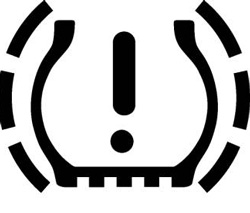 As TPMS is becoming more common on vehicles, more misinformation is starting to develop as consumers and shops try to come to terms with the systems. One of the most misunderstood areas of TPMS is sensor signals.
As TPMS is becoming more common on vehicles, more misinformation is starting to develop as consumers and shops try to come to terms with the systems. One of the most misunderstood areas of TPMS is sensor signals.
A sensor is a transmitter of information. It sends pressure and temperature information to the vehicle. Also, some signals include information identifying the sensor and the health of the battery.
A sensor is almost never a receiver. The only exception is during the reprogramming of some sensors where a some sensors use a tool to excite a coil in the sensor to enter into learn mode. Some sensors enter into learn mode by placing a magnet over the valve stem.
What tells the sensors to transmit when they are on the road? The answer is accelerometers and programming that tells the sensor to transmit at specific intervals and speeds. When a sensor is not turning, it is not typically transmitting information. When it is moving, it is transmitting information in 15, 30 or 60 second intervals depending on the application. By not transmitting a signal all the time, the battery can last up to 10 years.
When a vehicle is not moving for a defined period of time, the sensors will go into a rest or sleep mode. It may take between 10 to 20 minutes for the sensor to enter this mode. Some systems require the sensors to be in this mode when the relearn procedure is initiated. This is why some systems require the vehicle to sit for at least 20 minutes.
 All TPMS sensors, tools and everything that transmits a signal has to be approved by the Federal Communication Commission (FCC). The FCC makes sure our airwaves do not clash by regulating the frequency and strength of signals. Most direct TPMS systems use ultra high frequency (UHF) radio in one of the ‘unlicensed’ ISM bands (Industrial, Scientific and Medical) for transmitting the data, often around 434 MHz.
All TPMS sensors, tools and everything that transmits a signal has to be approved by the Federal Communication Commission (FCC). The FCC makes sure our airwaves do not clash by regulating the frequency and strength of signals. Most direct TPMS systems use ultra high frequency (UHF) radio in one of the ‘unlicensed’ ISM bands (Industrial, Scientific and Medical) for transmitting the data, often around 434 MHz.
For an outside device to interfere with a TPMS signal, it must do three things. First, it must be transmitting a signal in the same bandwidth. Second, it must be transmitting for a long enough period of time that it interferers with multiple transmissions from the sensor. Third, it must transmit a signal with the same code or protocols as the sensor. In other words, the interference must occur at the right time, right place and saying the right things.
Most TPMS systems are smart enough to realize that something is interfering with the signals, and will disregard a bad sample and wait for the next transmission from the sensor before turning on the light and warning the customer. By that time, the vehicle has moved away from the interference source.
Cell phones cannot interfere with a TPMS system. The same is true with BlueTooth devices. Their signals are not continuous and they are not in the same bandwidth.
The one time interference is a problem is during the relearn process. Some OEMs recommend that the relearn process is performed away from other vehicles and outside. The main concern is that sensors from other vehicles could be captured by the system.
The main culprit for sensor interface during the relearn process is not a high gadget, but the car itself. Sometimes a sensor can have its signal blocked by a brake caliper, control arm or other large metal object placed between the sensor and antenna. The only solution is to move the car forward a few feet to unblock the signal.
TECH TIP: Outside Radio Signals Affects TPMS
TIA Gets NHTSA Response on TPMS Questions











